The Atlantic spotted dolphin (Stenella frontalis) is a member of the family Delphinidae that can be found in temperate and tropical waters throughout the Atlantic. Calves are born unspotted, and spots don’t appear until 3-4 years of age, on average. More spots appear as the dolphin ages and physically mature dolphins have the heaviest spotting, although the amount of spotting can still vary between individuals. Mature spotted dolphins are beautiful animals and it’s unfortunate that animal toy producers don’t acknowledge this. Very few spotted dolphin toys exist and aside from the Safari TOOB figure they’re all long retired and rather crude in appearance. The standout of the bunch is the 1996 spotted dolphin by Safari Ltd. and this has led to it being a highly desired figure among cetacean collectors.
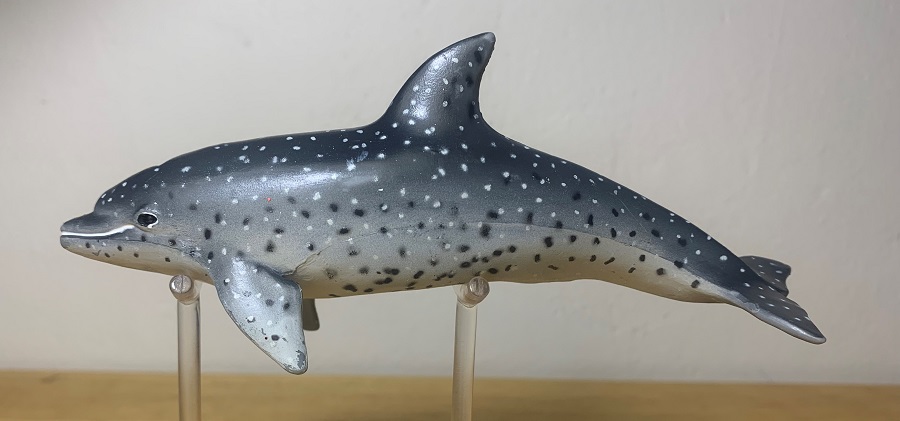

Safari marketed this figure as a spotted dolphin, and on the belly only “dolphin” is printed. But there are two species with the name spotted dolphin. The Atlantic and pan-tropical (S. attenuate). Thankfully, differentiating the two is not difficult and this figure has a more robust build like the Atlantic spotted dolphin which makes identifying it as such easier. The Atlantic spotted dolphin reaches a length of about 7.5’ (2.25 meters) which means that this 5” (12.7 cm) figure comes out at 1/18 in scale.
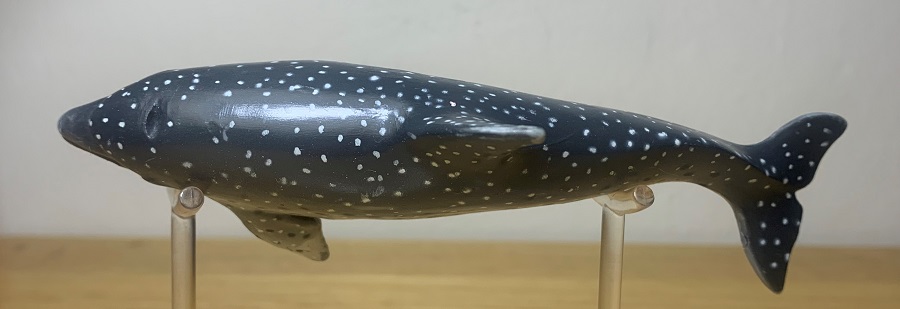
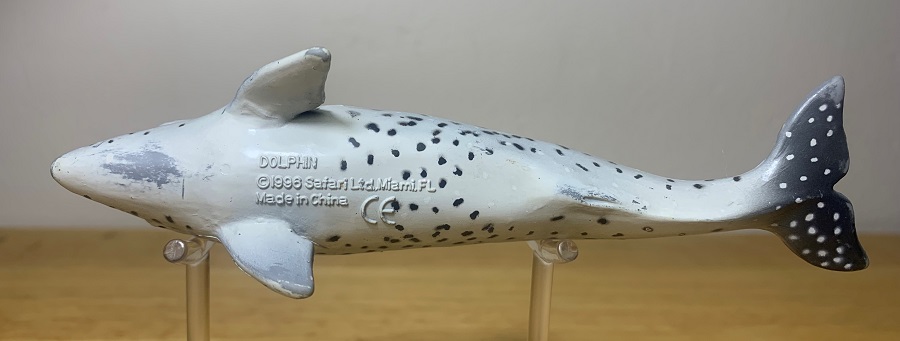
The body of this figure is basically just a generic dolphin body, albeit a nicely sculpted one. It lacks some of the finer anatomical features unique to the Atlantic spotted dolphin, relying entirely on the presence of spots to indicate what it is. For example, the beak is far too short and robust, and the flippers aren’t as long, curved, and pointed as they should be. The dorsal fin is a close match though, and I appreciate the defined keel along the tail stock. A genital slit is sculpted on the underside which is something that Safari has omitted from many recent cetacean figures.

The coloration of the toy is basically dark gray that gradually fades to white on the underside, overlaid by randomly distributed black and white spots. It’s enough to indicate that this is a spotted dolphin but not nearly as complex as it would be in life. In life, Atlantic spotted dolphins have a three-part color pattern. There’s a dark gray dorsal cape, light gray along the sides that crosses up and over the back, and a white belly. A light gray shoulder blaze running into the dorsal cape, below the dorsal fin, should be present as well. The beak is typically tipped in white too but that’s not the case here.
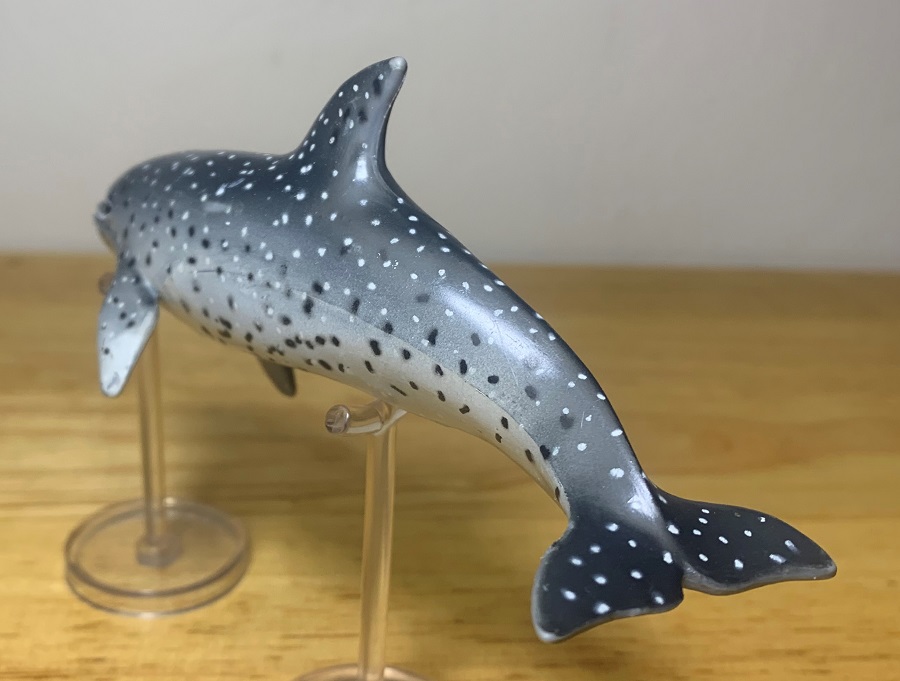
In life, a lot of the underlying pattern is lost in mature individuals, where the spotting is so heavy that it obscures everything else. Since this figure is not so heavily spotted it would have been nice to see more attention given to the underlying pattern. Giving credit where its due however, dark spots are painted along the underside and white spots are painted along the top, which is accurate to the species.
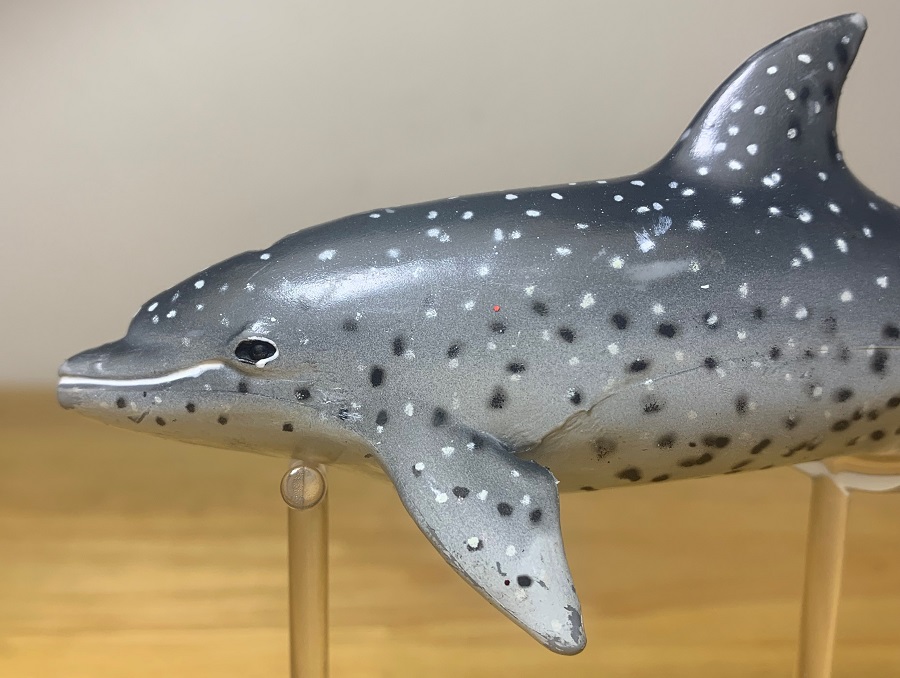
Overall, this figure is the best representative of its species, but mostly by default. It’s not a bad toy, especially given its age, but hardly meets our modern standards as collectors. I have to think that a toy company will eventually release a spotted dolphin with a greater attention to detail and accuracy and when that day comes this toy won’t be as sought after as it currently is. In the meantime, if you have to have a spotted dolphin, this is the one. This figure is long retired and difficult to find but does show up on eBay either alone or in lots, often for a reasonable price. It’s just going to take some patient hunting on your part.

Disclaimer: links to Ebay and Amazon on the AnimalToyBlog are affiliate links, so we make a small commission if you use them. Thanks for supporting us!




I’ve wanted this figure since I started my non-Arthropod part of the collection. It still eludes me! Every now and then I check eBay but haven’t found it yet!
I checked eBay on a whim, searched spotted dolphin, and there it was BIN for $5. No way was I going to let that one slip by.
I just found it on eBay and snagged it! Interesting, it’s marked 1996 but came out in 1998. I wonder if the sculpt was originally used for a bottlenose dolphin in 1996 and repainted as a spotted in 1998 (?). Could explain some of the odd proportions. Anyway, I am happy to have secured one for the time being until something better comes along.